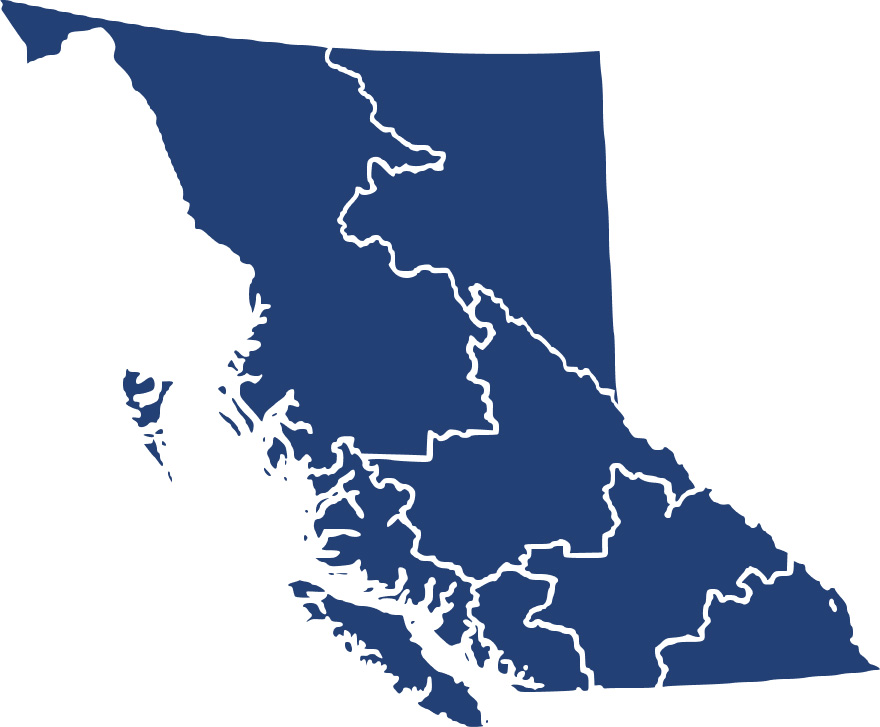Career Overview
Oil and gas well drillers and service rig operators control the operation of drilling and hoisting equipment on drilling and service rigs.
People in this occupation:
- Direct the activities of the rig crew and the operation of the rig equipment, under the supervision of the rig manager
- Operate specialized mechanical or electronic equipment to provide services in conjunction with well drilling or servicing
- Work for drilling and service rig contractors, petroleum-producing companies and well logging or testing companies
- Need mechanical and analytical ability, as well as good communication, leadership and management skills
- Must be able to work both independently and in a team environment
- Must be able to follow orders carefully and adapt quickly to new situations
- Should be physically fit
Duties
This group includes oil and gas well drillers, service rig operators and oil and gas well loggers, testers and related workers. Drillers and servicers typically supervise installation of and operate drilling equipment, and loggers and testers monitor and collect data about the operation.
Oil and gas well drillers and well servicers:
- Direct rig crew in setting up rigs and drilling, completing or servicing oil and gas exploration and producing wells
- Operate controls of drill or service rig drilling and hoisting machinery
- Train or arrange for training of crew
- Maintain records of drilling and servicing operations
- Ensure safety procedures are followed
Oil and gas well loggers, testers and related workers:
- Drive well service or wireline truck to well site
- Assemble and attach equipment, tools or recorders to drill stem or wireline to conduct required procedures and tests
- Operate or direct the operation of wireline or unit controls to lower, position and retrieve equipment and instruments
- Operate recorders and computers in mobile testing or logging unit to collect data
- May perform limited data interpretation
Earnings
Earnings is income that workers receive in exchange for their labour. Depending on the type of employment, earnings can be in the form of wages (hourly), salaries (fixed monthly or annual) or self-employed earnings.
Work Environment
# Workers Employed
615% Employed Full Time
48%Working conditions vary depending on rig locations and weather conditions. Many jobs in this group are located in remote locations. As a result, workers are often required to travel and stay either on or close to the site for extended periods of time. Worksites are outdoors and workers may be exposed to extreme weather conditions, and to dust, loud noises and fumes common around rigs.
Work in this occupational group is physically demanding and may involve lifting items that weigh more than 25 kilograms. Workers may also be exposed to potential hazards, including exposure to chemicals (e.g., paint, motor oil and drilling mixtures) and moving machinery commonly found on rigs. Safety is paramount and standard safety practices, safety gear (e.g., hard hats, eye protection, gloves and steel-toed boots) and emergency procedures are strictly regulated and followed.
Most workers in this group are full time. However, they generally do not work year-round because of the seasonal nature of the work and the impact of weather conditions. Very few workers are self-employed or work on a part-time basis. Shifts are usually 8–12 hours and rotating shift work is very common, as rigs operate 24 hours a day. Shift length varies by occupation, location and urgency of the job. Overtime and weekend work may also be required.
Career Pathways
Drillers and service rig operators may advance to rig management or other management positions in the drilling and service rig industries. Workers may also move into drilling-related equipment sales or rig training, regulatory or safety positions.
Direct rig experience is highly valued for advancement. However, additional education and training will also be required.
Related Careers
Occupational Interests
It’s important to understand what kinds of occupations align with your interests.
For more about occupational interests visit Skills for the Future Workforce > Characteristics.
Here are the top occupational interest(s) for this career profile:
Job Titles
Education, Training and Skills
Employers generally require workers in this group to be at least 18 years of age and have completed some secondary school education. In addition, these occupations require certification in first aid, workplace hazardous material information system, fall arrest, hydrogen sulphide awareness, transportation of dangerous goods, blowout prevention for service rigs and boiler operations.
Each occupational group also has its own specific educational requirements. These are described below.
Oil and gas well drillers and well servicers require:
- Three to six months of formal on-the-job training, college or Enform courses (or through an affiliated partner) and at least four years of work experience in rig crew positions
- Apprenticeship in the rig technician trade or a Rig Technician 3 journeyman certificate
Service rig operators require:
- Certification from Enform or through an affiliated partner
- Experience in junior positions on a rig crew
Oil and gas well loggers, testers and related workers undergo three to six months of on-the-job training and need several years of experience in subordinate positions on drilling or servicing rigs. A college program in electronics or engineering technology may be required for open hole well logging.
For more information, please see SkilledTradesBC's website at https://skilledtradesbc.ca.
Education programs in B.C.

Skills
Every job calls for a certain set of skills. Knowing those skills is the first step in finding a good career fit.
Here, you will find the 10 most relevant workplace skills. Some are more important to achieving success in a certain career than others. These skills may come naturally to you or you may need to gain them through education, training and experience.
See the list of work-related skills below, ranked in order of importance for this career. Check out the list and see if this career matches your skills—take that first step!
Watching gauges, dials or other indicators to make sure that a machine is working properly.
Controlling operations of equipment or systems.
Using logic and reasoning to identify the strengths and weaknesses of alternative solutions, conclusions or approaches to problems.
Keeping track of and assessing your performance, other individuals, or organizations to make improvements or take corrective action.
Giving full attention to what other people are saying, taking time to understand the points being made, asking questions as appropriate, and not interrupting at inappropriate times.
Determining causes of operating errors and deciding what to do about it.
Considering the relative costs and benefits of potential actions to choose the most appropriate one.
Teaching others how to do something.
Talking to others to share information effectively.
Being able to solve novel, ill-defined problems in complex, real-world settings.
Labour Market Statistics
Discover data, facts and information that have been gathered and analyzed. Learn about the characteristics of the economy and labour market in B.C.
Employment
Find out about employment types and trends by region and industry.
Employment
615Employment by Region















| Region | Employment | % Employment of this Occupation |
|---|---|---|
| Cariboo | 0 | 0.0% |
| Kootenay | 50 | 8.1% |
| Mainland/Southwest | 210 | 33.9% |
| North Coast and Nechako | 0 | 0.0% |
| Northeast | 120 | 19.4% |
| Thompson-Okanagan | 135 | 21.8% |
| Vancouver Island/Coast | 100 | 16.1% |
Labour Market Outlook
The B.C. Labour Market Outlook is a 10-year forecast of the expected supply and demand for labour in the province. It’s usually updated every year. The purpose is to provide British Columbians with the knowledge to make informed decisions on careers, skills training, education and hiring.
Forecasted Job Openings (2023-2033)
240Forecasted Job Openings
Forecasted Employment Growth Rate
Composition of Job Openings
Job Openings by Region (2023-2033)















| Region | Job Openings | Avg. Annual Employment Growth |
|---|---|---|
| Cariboo | Not available | Not available |
| Kootenay | 0 | -2.3% |
| Mainland/Southwest | 70 | 1.1% |
| North Coast and Nechako | Not available | Not available |
| Northeast | 20 | 0.7% |
| Thompson-Okanagan | 70 | 1.6% |
| Vancouver Island/Coast | 80 | 5.8% |
Industry Highlights
Learn about the opportunities in B.C.'s major industries, including employment trends, earning potential, locations of work and more.
Forecasted Job Openings by Industry
| Industry | Job Openings (2023-2033) |
|---|---|
| Mining And Oil And Gas Extraction | 170 |
| Professional, Scientific And Technical Services | 40 |
| Manufacturing | 10 |
| Transportation And Warehousing | 10 |
| Health Care And Social Assistance | 0 |
Insights from Industry
Many of the opportunities that will become available in the next several years will be a result of new job growth.
Resources
-
Canadian Association of Oilwell Drilling Contractors (CAODC)caodc.ca
-
Canadian Association of Petroleum Producers (CAPP)www.capp.ca/
-
Canadian Institute of Mining, Metallurgy and Petroleum (CIM)www.cim.org
-
Careers in Oil + Gaswww.careersinoilandgas.com
-
Enformwww.enform.ca/
-
Explorers and Producers Association of Canada (EPAC)explorersandproducers.ca
-
Petroleum Services Association of Canada (PSAC)www.psac.ca
-
Prospectors and Developers Association of Canada (PDAC)www.pdac.ca
-
Rig Tech – Industry Contactswww.rigtech.ca/live/Industry_Contacts








